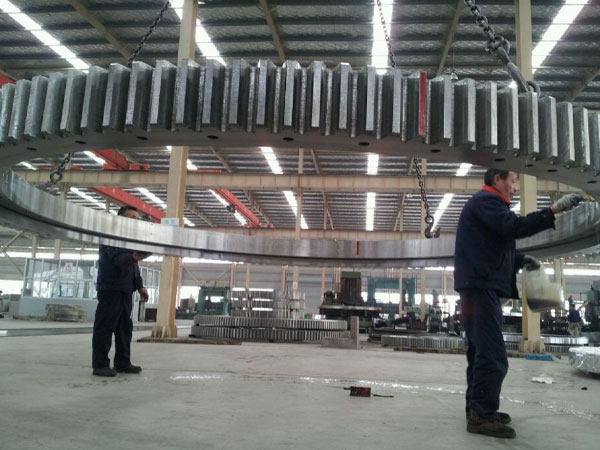Marine crane slewing bearing
With the development of offshore oil rigs, there is an increasing demand for large lifting equipment for platform installation and maintenance.

1. The requirements of basic function parameters are continuously improved. The lifting capacity of a single machine is basically above 1000t, the maximum working range can reach nearly 100 meters, and the lifting height of 2000 meters can be achieved, and the crane can be fully rotated.
2. Higher requirements are also placed on the effective working area of the lifting ship deck. Users often require lifting equipment to occupy a smaller deck area as possible.
3. In addition, there are also users who request to reduce the radius of the tail slewing and set the driving mechanism inside the rotating column. In order to reduce the external dimensions of the crane, it is not allowed to reduce the tipping moment by adding a balance weight.
In short, the development of offshore engineering cranes requires more and more superior performance and more and more compact forms. These requirements put a severe test on the design and manufacture of crane slewing bearings. To meet these requirements, the slewing ring is usually of the rotary column type and is installed below the deck of the ship.
The current rotary slewing bearing is usually composed of a set of upper rollers and a bottom radial thrust bearing. The upper roller is subjected to the horizontal force generated by the tilting moment, and the bottom radial thrust bearing is subjected to both horizontal force and vertical force.
The maximum lifting torque of a large-tonnage slewing crane can reach more than 100,000 Nm. In this case, the horizontal and vertical forces of the slewing bearing are relatively large, and the load can reach more than 3000t.

For the upper roller, there is great difficulty in the design of the single roller. The bearing capacity of the single roller is limited. In order to achieve the bearing capacity, the method of increasing the diameter and the number of the roller is adopted, which causes the roller to occupy too much deck space, which is unacceptable to the user; The friction coefficient is large, and the generated rotational resistance is correspondingly increased, resulting in an increase in the rotational drive power.
For the bottom radial thrust bearing, bearing horizontal force and vertical force bidirectional load, under the existing industrial conditions, it is not possible to design and manufacture a radial thrust bearing that can meet the above bearing capacity requirements. In the existing rotary slewing bearing form, the radial thrust bearing is also decomposed into a radial spherical bearing and a self-aligning thrust bearing, and the two bearings are respectively subjected to horizontal force and vertical force, so as to ensure automatic positioning, The center of the two bearing spheres coincides with one point. It is usually suitable for applications with small loads and sizes, and machining can guarantee accuracy.
After the size becomes larger, due to machining capacity limitation, manufacturing and installation errors, and structural deformation, it is impossible to achieve concentricity of the two bearings, which may easily cause the bearing to be partially stuck during operation, and cannot be rotated, resulting in early damage of the bearing, and the consequences are quite serious.
In view of the problems in the prior art mentioned above, it is necessary to study and design a new type of slewing bearing device for a marine ship-borne crane, thereby overcoming the problems existing in the prior art.



